
Like most folks, I was looking for the BEST things to do at Mt. Rainier National Park during my first visit.
And since this jaw-dropping national park is massive, proper planning is the name of the game!
I’ve visited Mt. Rainier National Park more than 40+ times over the past three years and have explored it in every season (we live a mere 3-hour-drive from the park).
In fact, most of my summer weekends are spent hiking at Mt. Rainier National Park. But what can I do? I’m a complete sucker for it.
I’ve compiled a list of all of my favorite things to do at Mt. Rainier National Park to make your trip planning easier.
Please don’t hesitate to reach out with questions, I’m more than happy to help make your trip planning as easy as possible
Visiting Mt. Rainier National Park Tips
Practice Leave No Trace
- If you’re unfamiliar with Leave No Trace, it’s a measure to be a good steward of the land. You can read about the seven principals of Leave No Trace here.
You + Sunscreen = Best Friends (Forever)
- Take my word for this. I forgot to use sunscreen while hiking the Skyline Trail at Mt. Rainier and came back with a burn so bad that I couldn’t sleep on my back for six days.
- I swear by this sunscreen, I discovered it in France and now buy it in bulk. You’ll never catch me without it!
Insect repellent (trust me on this one)
- My husband and I hiked an incredible lookout trail at Mt. Rainier National Park last summer and both returned home with 100+ mosquito bites. It was brutal! If you plan to hike at Mt. Rainier between June-July you should absolutely pack insect repellent — this is the insect repellent we use and swear by it.
Wear hiking boots with good traction
- Even though the trails are well maintained, exposed roots are common. It’s easy to trip in the woods, so set yourself up for success by wearing proper shoes.
- These are my hiking boots, and I’d sleep in them if I could.
Stay on the trail
- The stunning meadows are for all to enjoy, stay on the trail to ensure you don’t hurt delicate flora or fauna.
- Stepping on exposed tree roots actually harms the trees and causes them to degrade over time. Step over roots whenever possible.
Crowds
- No way around this, my friends. With an average of two million visitors a year, prepare for crowds – especially during the nice, warm summer months. Pacific Northwest folks wait all year for the dry summer months!
- To avoid congestion, visit during the weekdays whenever possible, and start your hikes early (before 8am is a safe bet).
Hiking with pups
- Dogs are NOT allowed on trails, snow, wilderness or in buildings. Essentially, pups can only go where cars can go. I can’t tell you how many times we’ve seen hikers prep their cute pups for a hike before a ranger notices and tells them dogs aren’t allowed on trails – heartbreaking to watch.
Maps & Guidebooks
This is the official Mt. Rainier National Park map we use for both business and personal trips, and the best guidebook (hands down).
Mt. Rainier National Park Map (the park’s 5 regions)
Before we discuss the best things to do at Mt. Rainier National Park, I’d like to stress the size of this glorious national park because it’s huge! And unlike smaller national parks, good planning is key to ensuring you get to see as much of the park as possible, especially with limited time.
To that end, It’s important to understand the layout of the park. There are 5 separate regions/entrances at Mt. Rainier National Park and some of these regions are 2-3 hours apart by car. The good news is that it’s possible to squeeze in hikes in multiple regions during a one-day trip, but it will make for a long day.
The five regions/entrance of Mt. Rainier National Park:
- Paradise (south)
- Sunrise/White River (northeast)
- Ohanapecosh (southeast)
- Longmire (southwest)
- Carbon River/Mowich Lake (northwest)
Mt Rainier National Park map
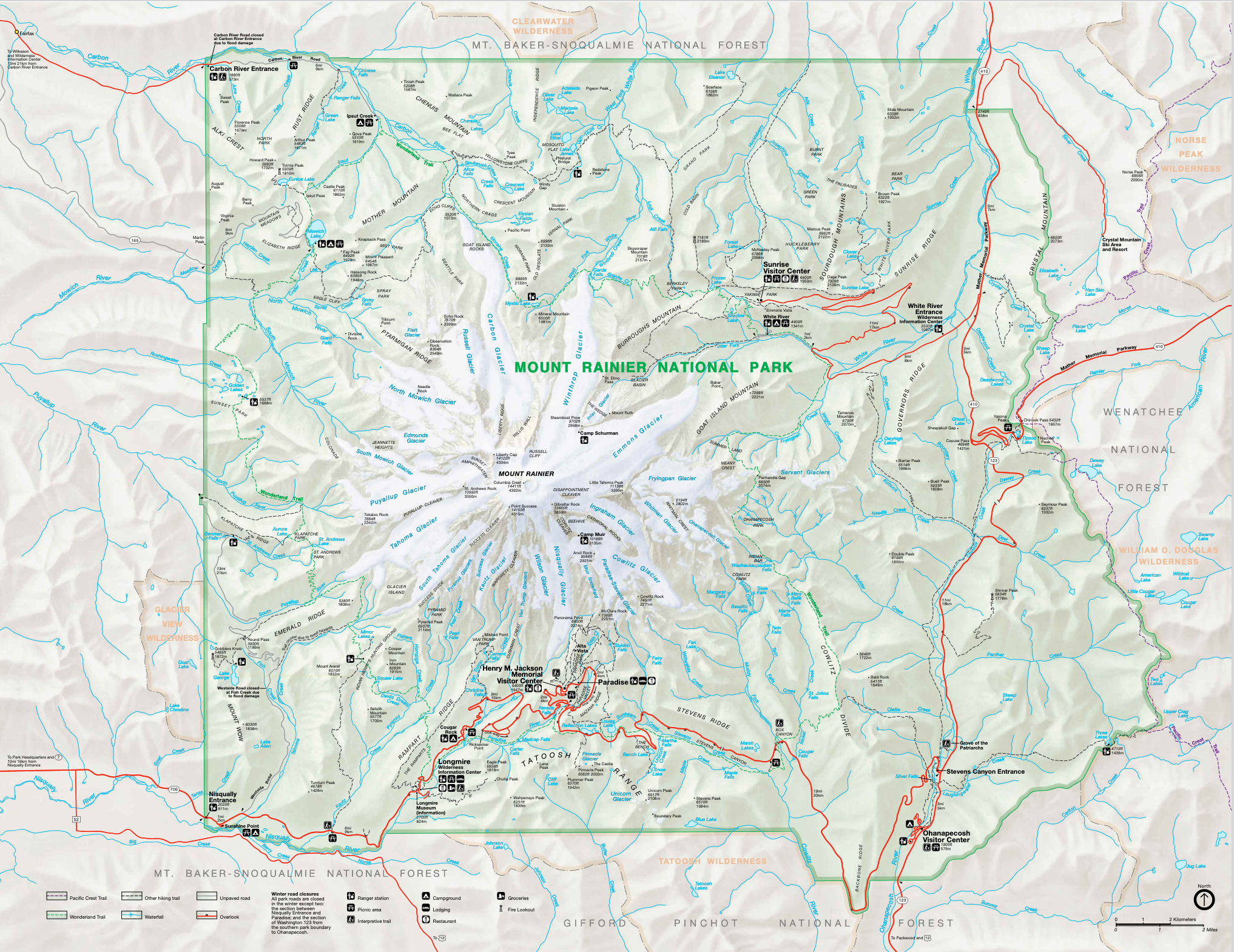
If you’d like to see an interactive map where you can zoom in on the various points of interest, this National Park Service Mt. Rainier National Park map will fit the bill. I use it frequently when planning my trips.
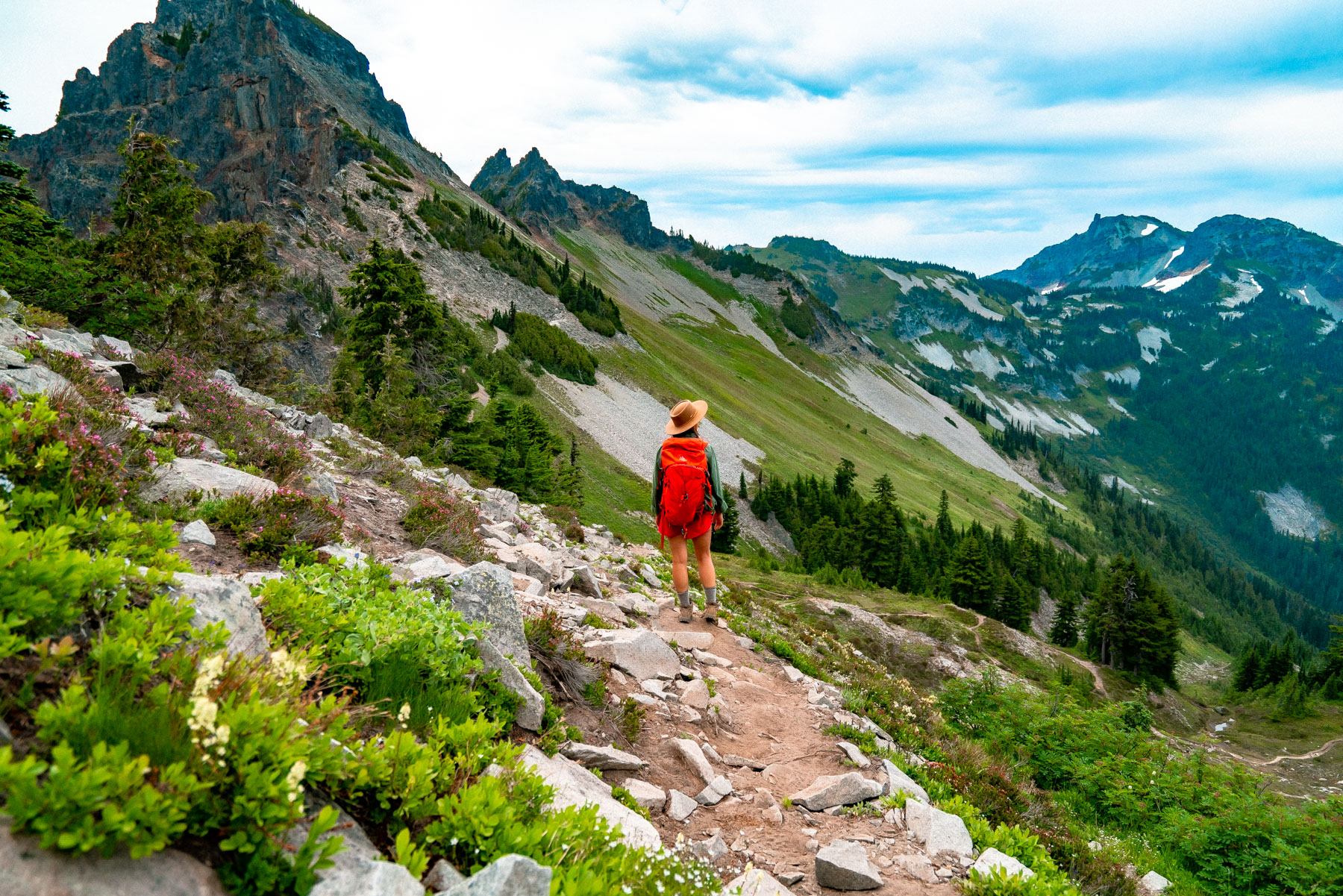
Best Things to Do at Mt. Rainier National Park
#1. Hike the Mt. Fremont Lookout Trail
If you only have time for one hike at Mt. Rainier National Park during your visit, make it the Mt. Fremont Lookout Trail and you won’t regret it.
The Mt. Fremont Lookout Trail offers one of the best vantage points of Mt. Rainier and puts the mountain’s size into perspective. Most of my friends consider this the most memorable hike at Mt. Rainier National Park.
It’s not hard to see why! The trail follows the Sourdough Ridge (think expansive alpine views) to Frozen Lake. Frozen Lake is the half-way mark of the hike and a great spot to take a break and have a snack (friendly reminder: make sure clean up after yourself and don’t feed wildlife). Once you wrap up — hang right to begin your ascent to the Mt. Fremont Lookout.
The panoramic views from Mt. Fremont Lookout Trail are jaw-dropping, which is why it’s one of the best hikes at Mt. Rainier National Park. You’ll notice Mt. Rainier is all her glory, pristine alpine lakes and dreamy rolling hills. This hike has it all, and since most of the trial isn’t shrouded by forest, you’ll be able to see everything around you.
Allow me to say it again, this is easily one of my favorite hikes at Mt. Rainier, you simply can’t beat the scenery! It reminds me so much of this dreamy Switzerland village we visited during our honeymoon.
For more photos and a comprehensive trip report, read: Hiking the Mt. Fremont Lookout Trail at Mt. Rainier National Park
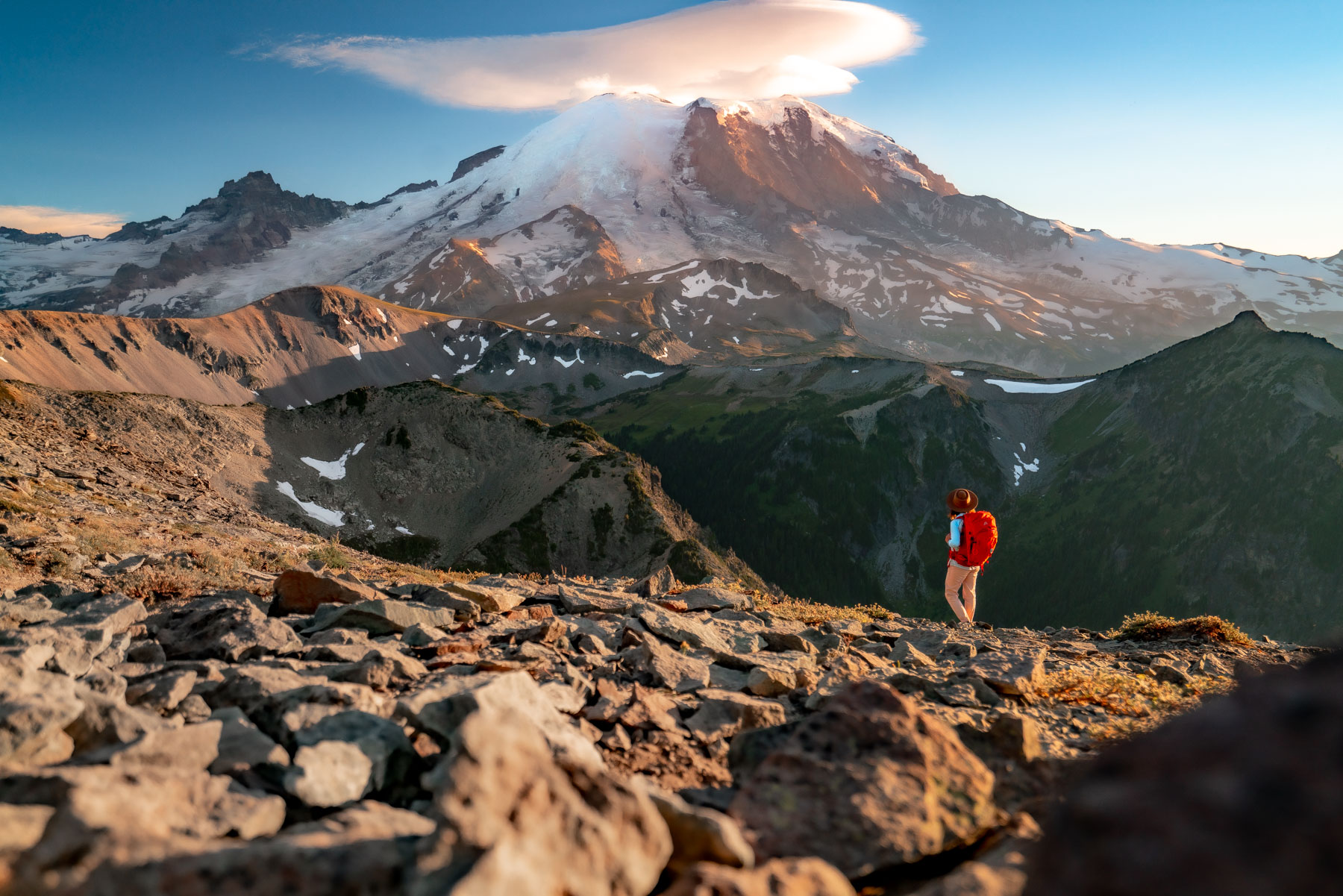
#2. Hike the Skyline Trail
When looking for epic things to do at Mt. Rainier National Park, look no further than the Skyline Trail — a must see for first-timer visitors! It’s the most iconic and well-known hike at Mt. Rainier National Park and a fan favorite for good reason.
The Skyline Trail Loop is a great alpine hike at Mt. Rainier National Park. I highly recommend this trail for first-timers because it’s arguably the most iconic and well-known trail in the park.
I won’t fool you, if you plan to hike the entire Skyline Loop it’s challenging but completely worthwhile because the scenery is incredible the duration of the trail, especially Myrtle Falls and Panorama Point. If you’re an avid mountain lover, this is the hike for you.
The best time to hike the Skyline Trail is mid-August when the wildflowers hit peak bloom. If you’re after the best wildflower hikes at Mt. Rainier, make sure to read this helpful post.
The stunning alpine views from this high-elevation trail makes this one the best hikes at Mt. Rainier National Park, an experience you would be remiss to skip during your visit.
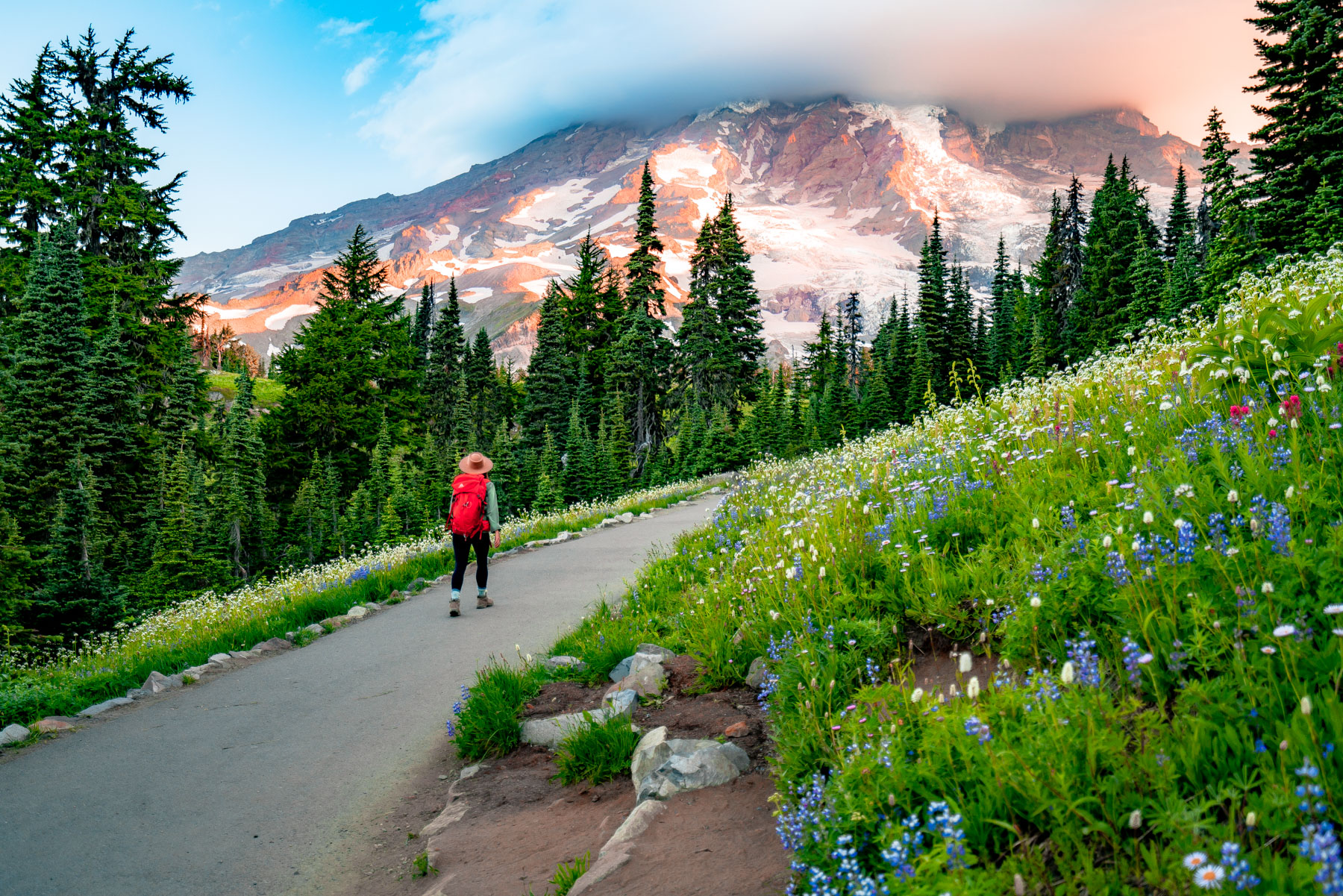
#3. Catch wildflowers at peak bloom
See wildflowers at peak bloom is one of the best things to do at Mt. Rainier National Park. The best time to catch peak bloom is mid-August when the green pastures find themselves ablaze with pops of color. The high concentration of wildflowers truly changes the magical landscape of this incredible national park!
For the very best wildflower hikes, read: 10 BEST Wildflower Hikes at Mt. Rainier National Park.
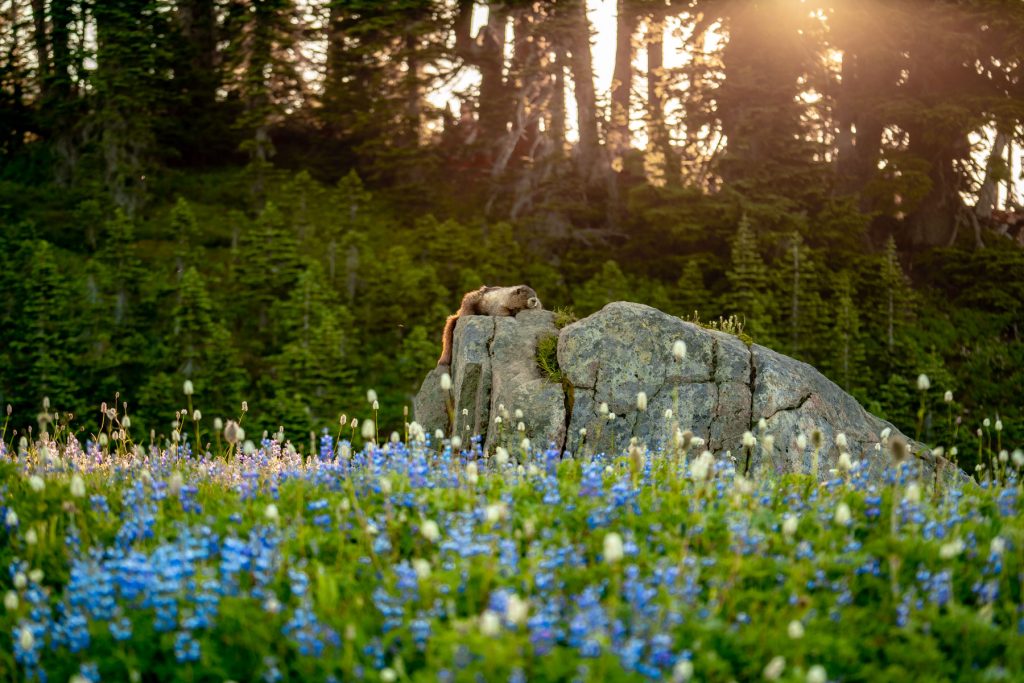
#4. Soak in the glaciers from the Paradise side
Did you know that Mt. Rainier National Park is the most heavily glaciated peak in the lower 48 states? Explore the glaciers near and far!
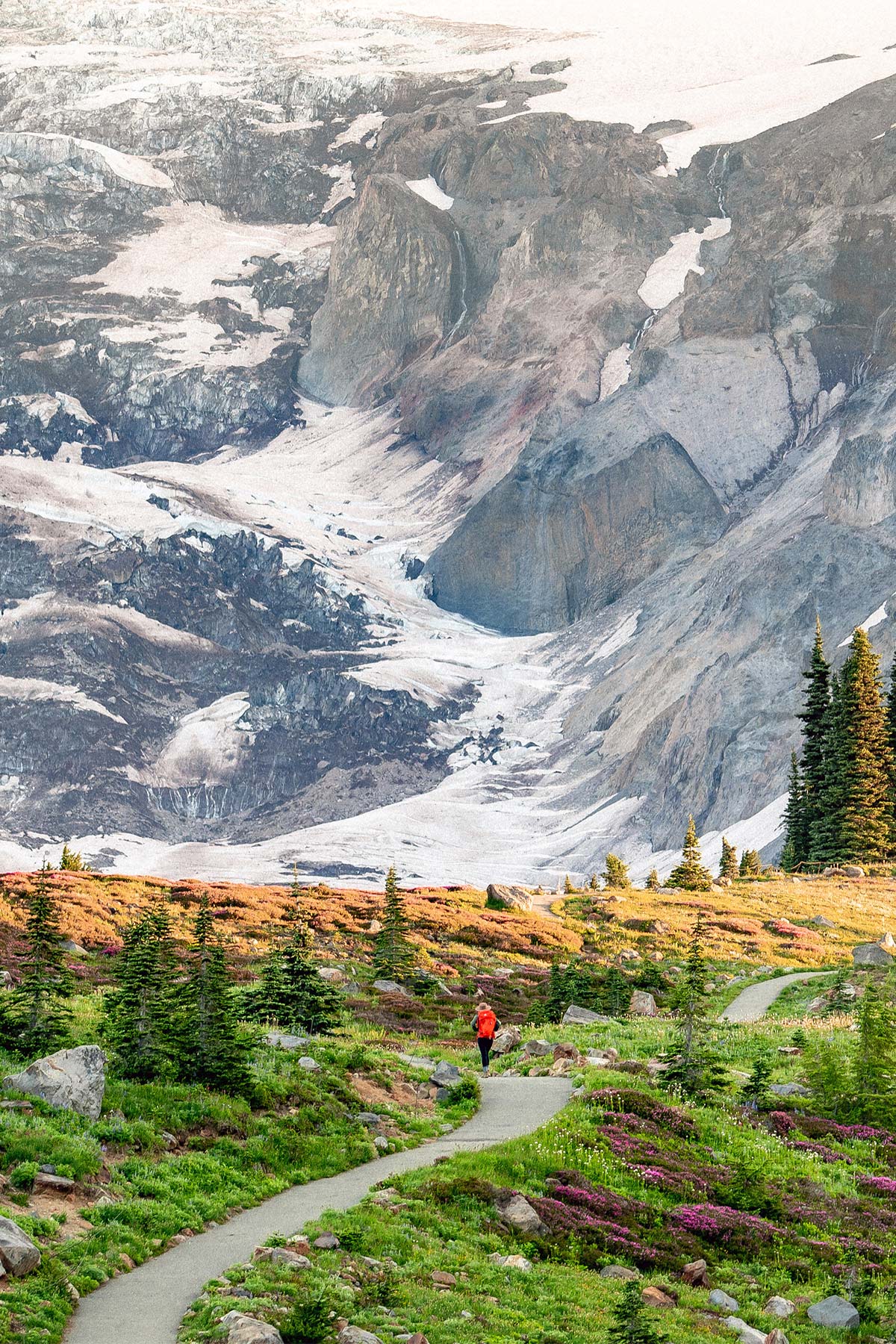
#5. Take in the giant ancient trees at Grove of the Patriarchs
The Grove of the Patriarchs is an easy hike at Mt. Rainier National Park perfect for families with small children. The trail is completely flat and leads you through some of the largest and oldest trees at Mt. Rainier National Park.
Towering red cedars (some over 1000 years old), Douglas firs, and western hemlocks are the stars of the show, along with a pretty cool suspension bridge.
Much of this trail is on a boardwalk that snakes through the giant trees – great for families with kids.
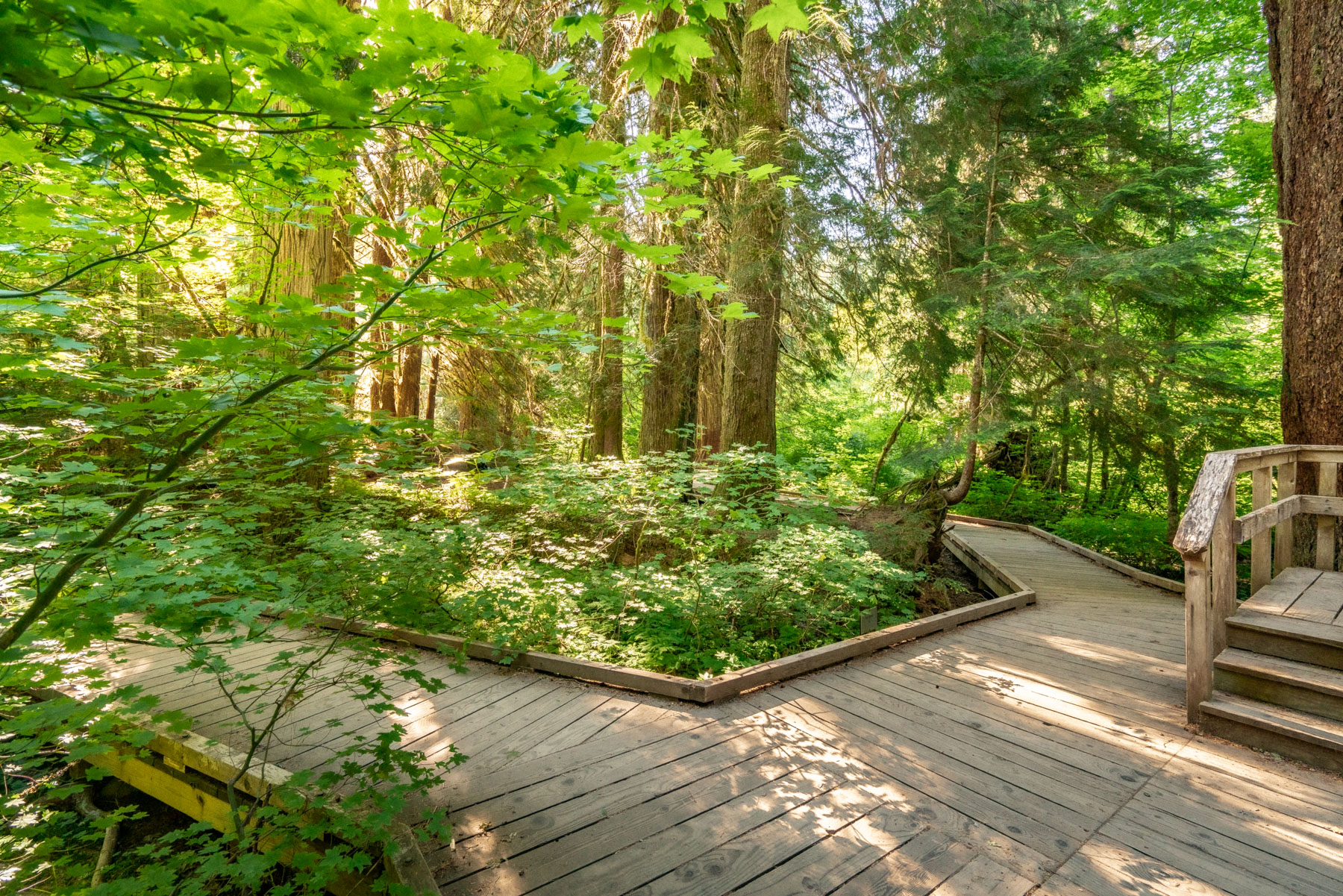
#6. Hike the Pinnacle Peak Trail
Reaching Pinnacle Peak is another great thing to do at Mt. Rainier National Park because the view from the summit is incredible! This hike has significant elevation gain but considering the short distance, it’s the best bang for your buck.
The elevation gain is steep, but considering the short distance to the summit, it’s completely worth the effort. The jaw-dropping views in a relatively short distance because this Mt. Rainier hike one of the best bangs for your buck.
I enjoy the Pinnacle Peak Trail so much, I’ve hiked it 6 times!
Note: We saw TONS of marmots on this hike as we approached the summit. We could have spent hours simply watching them run around.
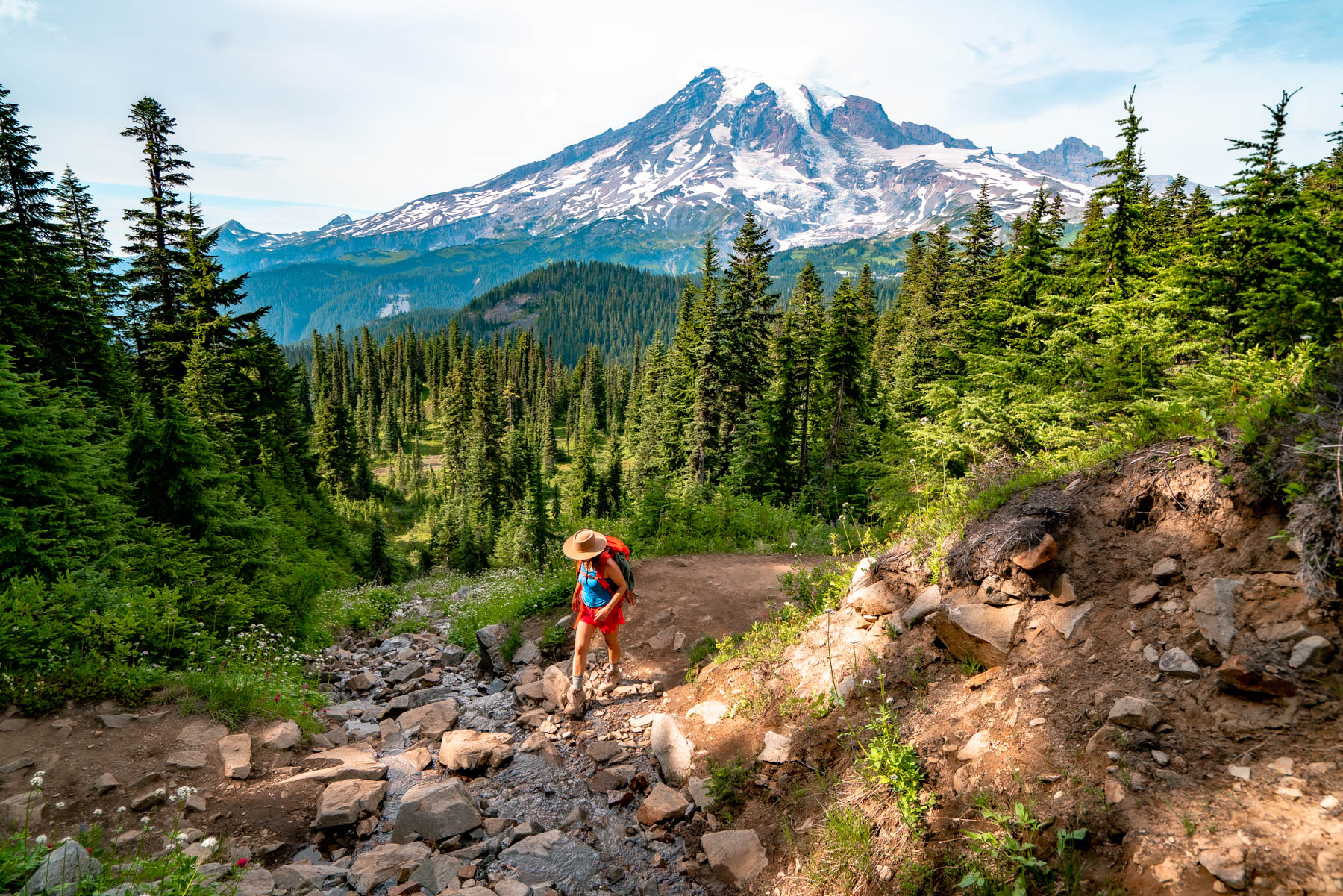
#7. Hike to the Tolmie Peak Lookout
The Tolmie Peak Fire Lookout Trail isn’t as popular as some of the other hikes at Mt. Rainier As such, it’s a great thing to do at Mt. Rainier National Park if you’d like to avoid crowds.
The trail follows a healthy forest until clearing out to a dramatic view of Eunice Lake, the pristine alpine lake pictured above. So if lush forests,glassy alpine lakes, wildflowers, and panoramic views of the famous Cascades are your cup of tea, this is the Mt. Rainier hike for you.
Soak up the beautiful views of Eunice Lake before heading further uphill to the Tolmie Peak Fire Lookout. From there, take in the glorious views of Mt. Rainier. The mountain was obstructed by clouds during our visit, try to visit when clear skies are predicted in the forecast for more dramatic views.
NOTE: Depending on the time of year you visit, mosquito repellent can be a necessity (here’s the brand my husband and I swear by). I returned home with more than 100 mosquito bites (not exaggerating, we counted) after hiking this trail and so did my husband — mea culpa!
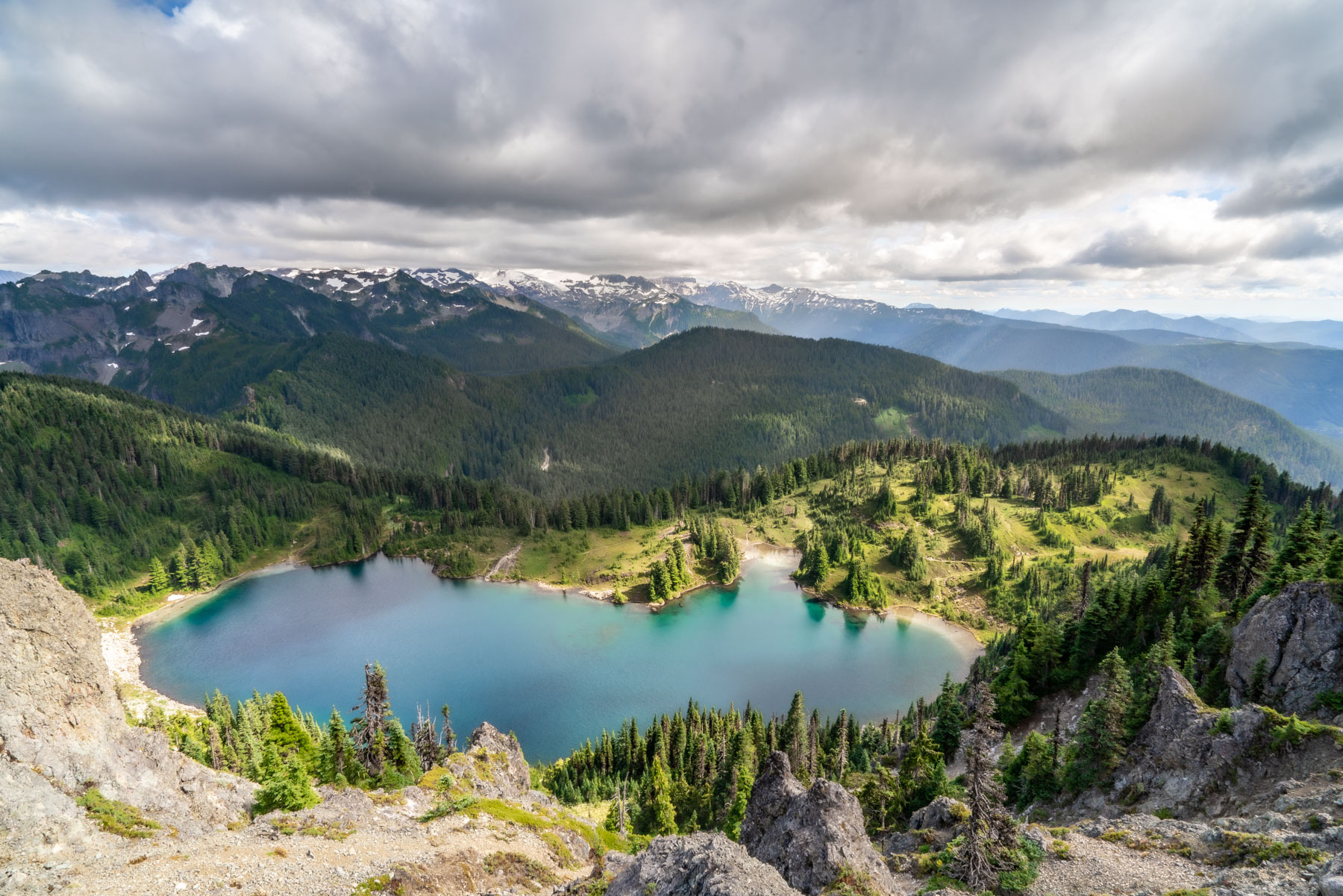
#8. Take in the views from Burroughs Mountain Trail
This Mt. Rainier hike has the same starting point as my favorite hike at Mt. Rainier National Park (the Mt. Fremont Lookout Trail) but instead of taking right at Frozen Lake junction, you’ll take a left (fret not, the trail signs are easy to follow) and begin the Burroughs Mountain trail.
Let me tell you, this trail takes you SO close to Mt. Rainier it feels like you’re en route to the summit — making this an epic thing to do at Mt. Rainier National Park!
The Burroughs Mountain Trail leads to the most dramatic viewpoint of the surrounding valleys and brings you to eye level with Mt. Rainier, it’s a very memorable hike!
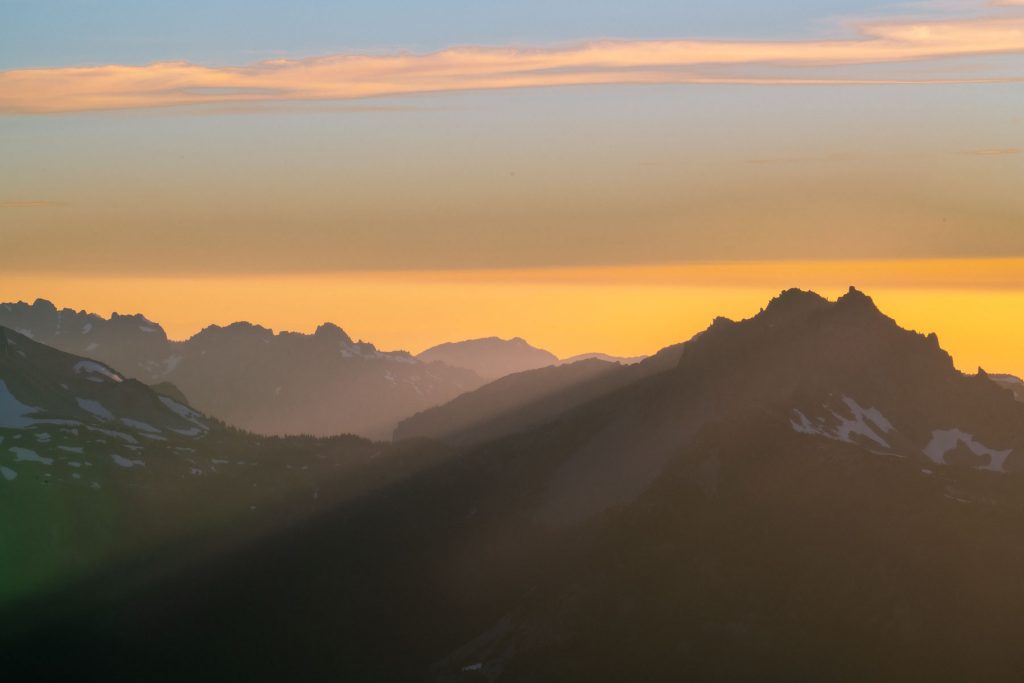
#9. Visit Paradise Inn
Built in 1916, the Paradise Inn at Mt. Rainier National Park is a beloved icon to this day and you would be remiss to skip it. The interior alone is worth a visit, a historic stone fireplace sits at the center of a grand room full of incredible wood furniture (such intricate details!) and interesting decor. It doesn’t get cozier than this!
The Paradise Inn is a great place to rest your weary legs or prepare for a hike. There’s a restaurant that serves pretty decent fare, but as with most national park restaurants, it’s kind of pricey.
If you’re in a hurry, suggest grabbing something from the little convenience store adjacent to the great hall and enjoying the stunning views of Mt. Rainier from the Paradise Inn veranda.
#10. Stargaze (Best Thing to Do at Mt. Rainier National Park!)
Every year, like clockwork, my husband and I head to Mt. Rainier to catch the Perseid meteor shower because it’s one of the best things to do at Mt. Rainier National Park.
It’s incredible and never gets old — the milky way aligns behind the massive mountain and creates the perfect conditions for stunning astro-photography on a clear day – don’t miss it!
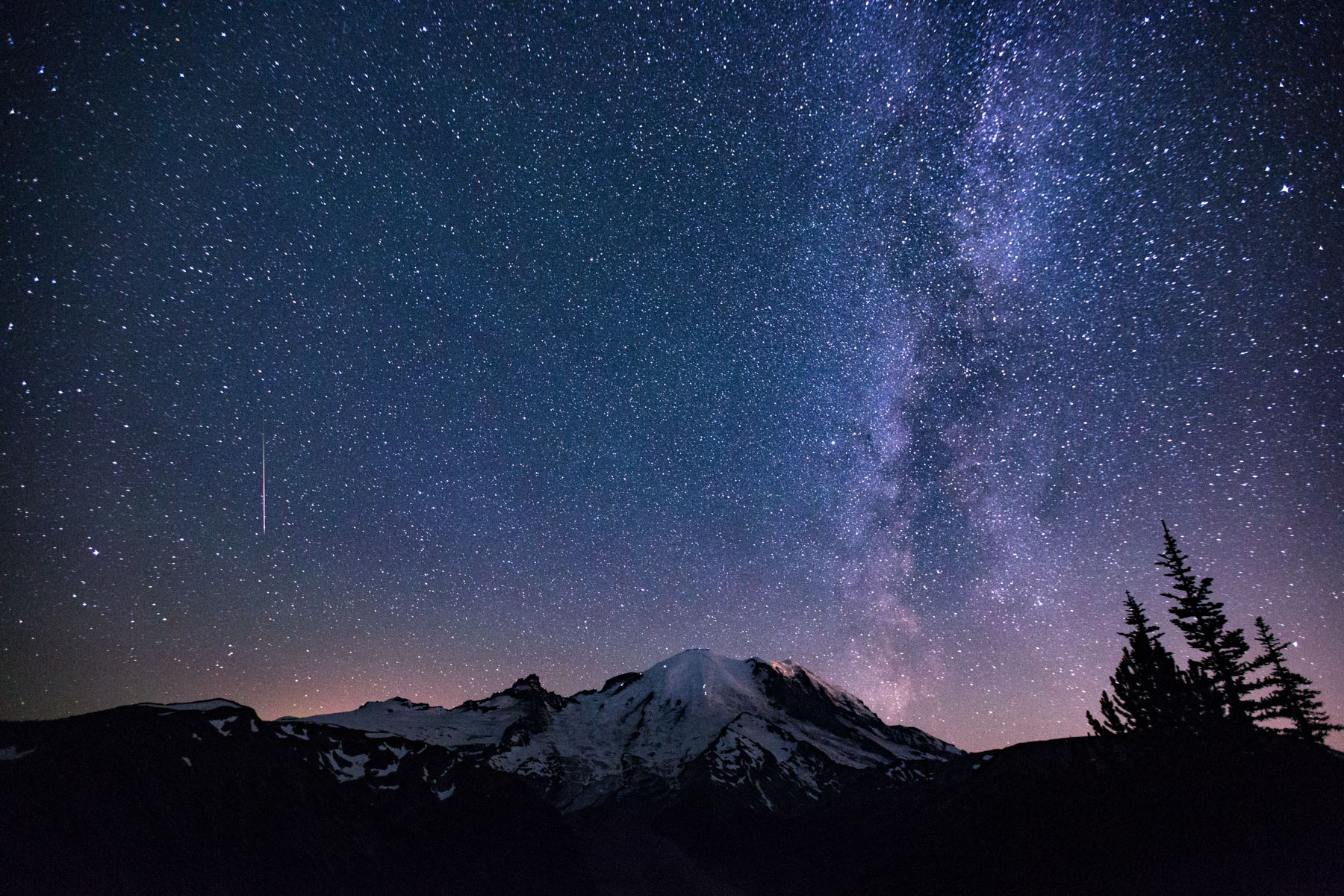
Best time to visit Mt. Rainier National Park
Mt. Rainier National Park has a shorty hiking season due to the amount of snowfall in the area. The best time to hike at Mt. Rainier is July through September. During the fall, winter and spring season most of the park roads are closed.
All this to say, make sure you time your visit during the summer season if you can. During summer the temperatures are mild (perfect for hiking) and the wildflower season, which occurs late July through mid-August, completely transforms the park with color.
It’s worth mentioning that Mt. Rainier National Park is snow free mid-July to mid-October. Unless you’re into snowshoeing, these are the best month to hike in the park.
Lodging & camping
There are two inns located within the park:
- Paradise Inn (Paradise)
- National Park Inn (Longmire)
There are four designated campsites at Mt. Rainier:
- Cougar Rock
- Ohanapecosh
- White River
- Mowich Lake
For information and rules about camping at Mt. Rainier, read: Plan Your Visit | Campgrounds at Mt. Rainier
Driving & gas
For the most part, driving at Mt. Rainier National Park is a breeze because the roads are very well maintained. However, it never hurts to check current road conditions before heading out.
Gas is NOT available in the park, but there are gas stations in the local communities nearby.
During busy season (mostly summer) you can expect over-flowing parking lots, some delays and a long line to get in. My advice is to come as early as possible (think 8am) to avoid the crazy surge.
For example, one time my husband and I were leaving the park around noon and counted 120 cars in line waiting to get into the park. The wait was several hours long!
Getting to Mt. Rainier National Park
If you’re flying in, welcome to the lovely Pacific Northwest! Here’s the info you’ll need to know.
Seattle International Airport
- The drive from Seattle to the park takes approximately 2-3 hours, depending on the entrance point (listed below).
Portland International Airport
- The drive from Portland to the park takes approximately 1.5 – 3 hours. We do this drive almost every-other weekend in summer, it’s a breeze!
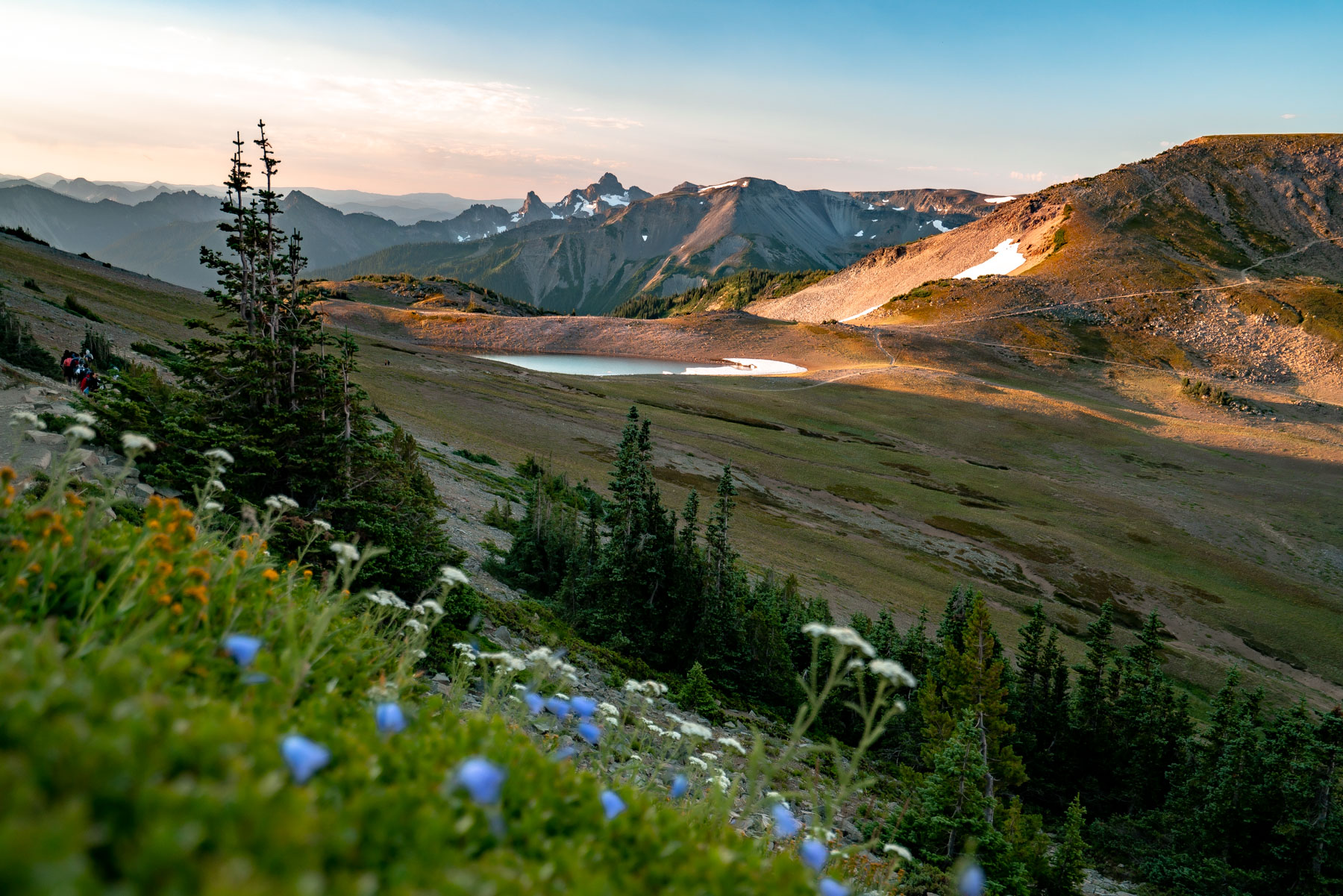
Interesting facts about Mt. Rainier National Park
- Mt. Rainier is an active volcano, in fact, it’s considered one of the deadliest volcanoes in the entire world.
- Walt Disney honeymooned at Mt. Rainier National Park.
- Mt. Rainier is America’s 5th national park – making it one of the oldest. It was established in 1899. What’s more, it was the first national park to allow cars.
- With 25 glaciers to its name, Mt. Rainier is the most heavily glaciated peak in the lower 48 – how cool is that!
- The mountain’s original (read: native) name is a variation of Tacoma/ Tahoma. The mountain as we know it today is named after Captain George Vancouver‘s friend — Peter Rainier.More than 280 species of wildlife call the park home.
Summary of the best things to do at Mt. Rainier National Park
In sum, these are the best things to do at Mt. Rainier National Park:
- Hike the Skyline Trail
- Hike the Mt. Fremont Lookout Trail
- Catch wildflowers at peak bloom
- Soak in the glaciers from the Paradise side
- Take in the giant ancient trees at Grove of the Patriarchs
- Hike the Pinnacle Peak Trail
- Hike to the Tolmie Peak Lookout
- Take in the views from Burroughs Mountain Trail
- Mt. Rainier Paradise Inn Veranda
- Stargaze at Mt. Rainier National Park
I hope you enjoyed this list of the best things to do at Mt. Rainier National Park — it’s an incredible national park and I’m sure you will love you time there!
Further Reading
- 10 BEST Wildflower Hikes at Mt. Rainier National Park
- 9 BEST Hikes in Redwood National Park
- Sequoia National Park in Winter (with video)
- 14 Things to do in Virgin Islands National Park
- 16 Things to do in Death Valley National Park
Mt. Rainier National Park things to do, Mt. Rainier National Park things to do, Mt. Rainier National Park things to do, Mt. Rainier National Park things to do, Mt. Rainier National Park things to do
Until next time,
Antonina
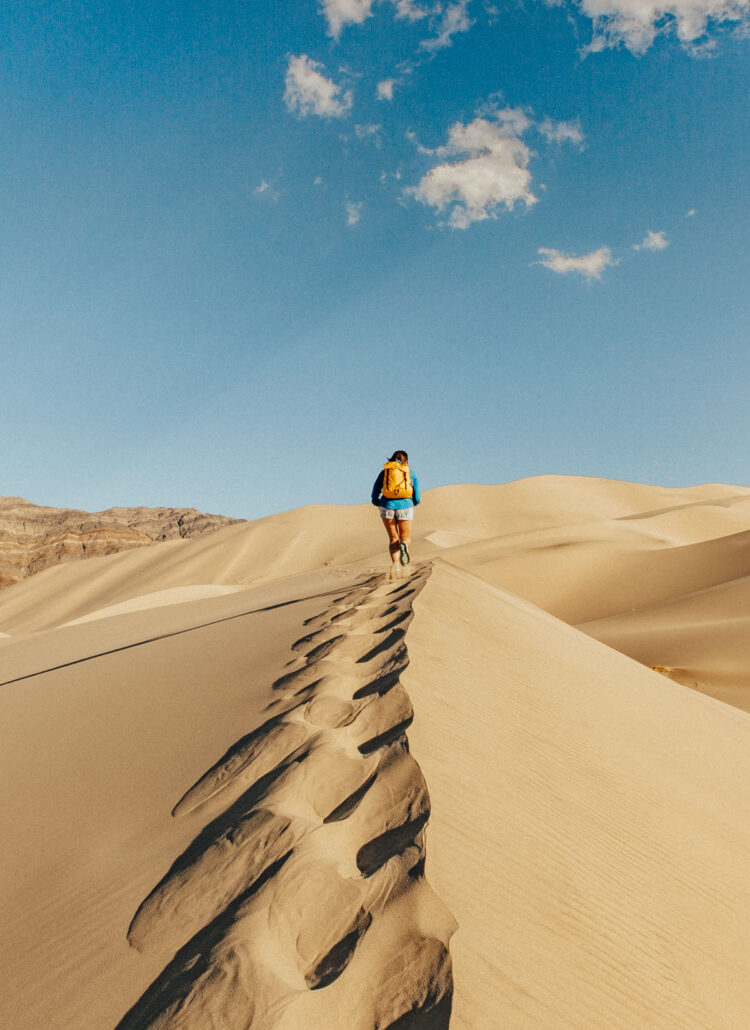
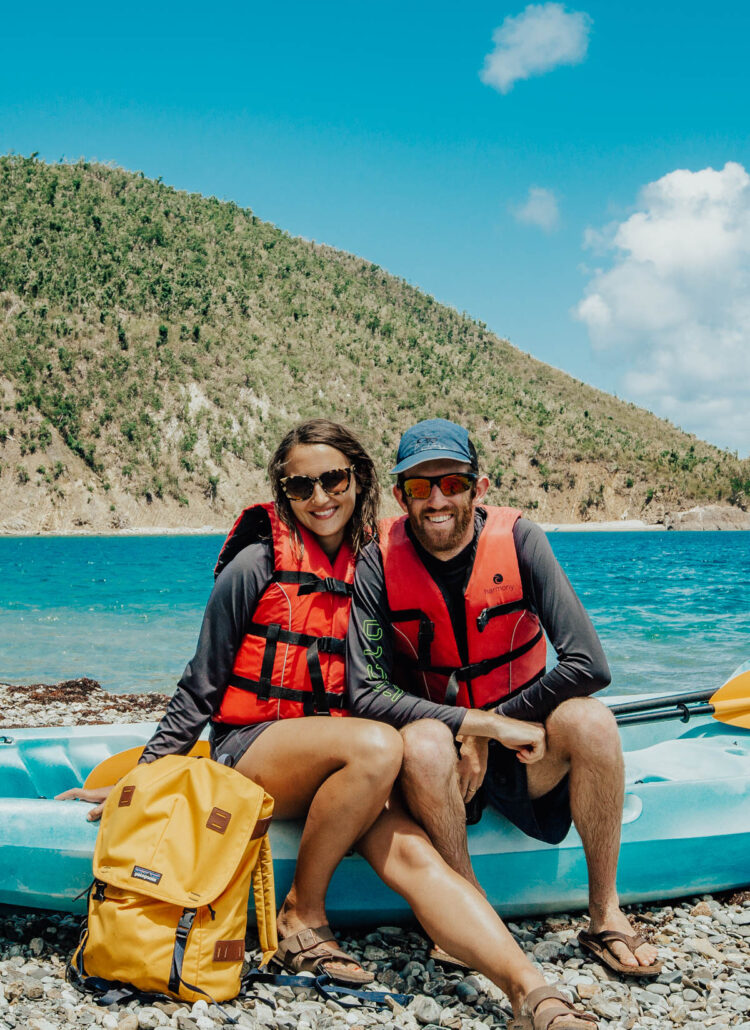
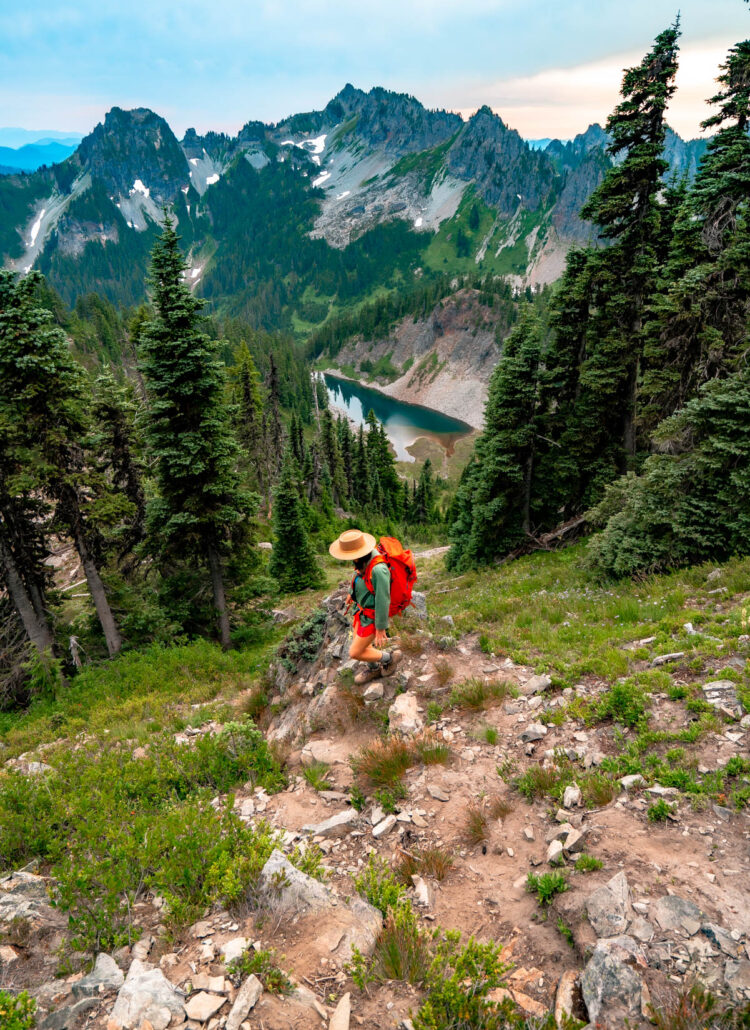
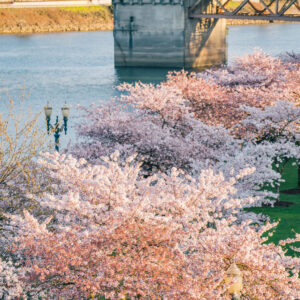
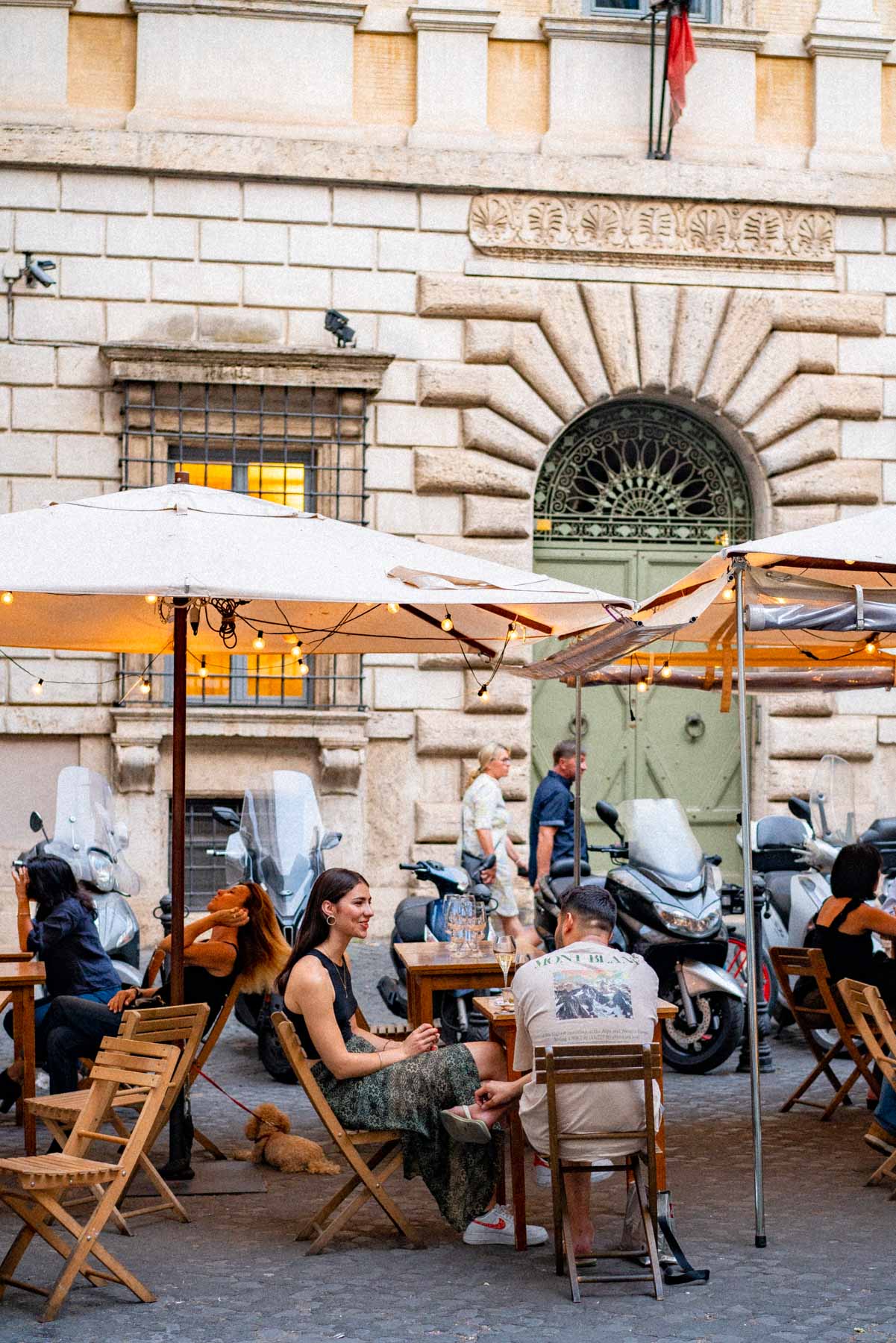
Worked at longmire summer s 1969 and 1970…there was a gas station then…next to the inn
Well written article. And if you think the day hikes are breathtaking, try backpacking the Wonderland trail. T is beyond words. I’ve been able to do it twice, and loved every minute of it.
I grew up at Sunrise and lived in the right blockhouse with other Ranger families. My Dad was a Ranger Naturalist and did all of the nightly talks in the visitors center when there was camping allowed in close proximity. I would, as an 8 year old, show how to make a prussic knot and climb up to the logs that were the upper structure of the roof. I’ve hiked the entire Wonderland trail. Watched the moon landing from the top window of the bunk areas for the college students who would stay the Summer working at the fountain. They had a small tv and antenna with tin foil out of the top right window in ‘69. I was 8 when my Dad took the job and we didn’t leave until I was 13 and an Eagle Scout in the process.
Thanks for sharing this information as the mountain belongs to everyone. We may claim her as our own to keep that feeling of freedom alive. Fremont lookout was a good trail as you mentioned and we would help bring water to the Ranger who stayed there for his or her shift. Grand Park is beautiful from there and my Dad helped fight the Grand Park fire that occurred during our time there.
You can literally touch God’s hand from 6400’!
I went to Mount Rainier in August and Oh My God I was so impressed how beautiful it is, totally a Paradise, I was able to see maybe 5% of it and hike a few minutes and was totally amazed! I’m definitely going back because I have soooooo much to explore! Simply Beautiful
Im planning a trip to Seattle for the first time ever this fall… and want to make the most of it by visiting Mt Rainier national park. This would be around mid October to be precise. Do you think it may be risky because its cooler weather, and chances of snow are higher in the mountains? what are the odds Id still be able to enjoy a fall hike in this weather?
Hi there!
How exciting! mid-October can be a bit risky in regards to snow but there’s some great reasons to try it anyway:
1. Crowds will be way down which means more of the park to yourself.
2. The fall foliage and color at Mt. Rainier is really underrated – it should be beautiful when you visit!
3. Even if there’s snow, the road to Paradise will be plowed (unless there’s some really crazy, unexpected storm).
Definitely pack a jacket and understand that October is when precipitation typically returns to the mountain. I have had some lovely hikes in October and would not let the cooler weather deter you from the park (so long as you’re prepared!).
Hope that helps!
Cheers,
Antonina
How about #11. Climb the mountain.
Thank you for writing this blog. Much appreciated. Loved my visit to Mt Rainier. Thanks to you. Have a great day.
Hello, this is my first time in Seattle. We love to visit the mountain, there’s a little boy (5 years) with us. We are planning to visit the area by January. What is your recommendation?
Hi Sara,
Thanks for stopping by! I highly recommend the Paradise section of the park for your first visit. It is absolutely breathtaking up there. The skyline trail is a great one to soak in the views of the mountain.
Enjoy!
Antonina
Hi Antonine. I loved your article. Your love of the place just overflowed from the descriptions. Our group of three mature adults will be visiting for the first time. We will visiting Mt Rainier from June 4-11, 2022(already have cabin reservations). I read somewhere that Paradise areas and elsewhere do not open until late June. Is this true? If true, will they open earlier if due to the weather, the snow melts because of climate change? Thank you for any tips or suggestions in case Paradise is not open during our trip.
I am in Seattle on May 5- 7. Is it good time to go to Mount Rainier?
Early May will be chilly but the mountain will be gorgeous. Just plan to spend more time in the car than you normally would if you were visiting in June/July (when hiking weather is more optimal). The mountain is gorgeous though, and definitely worth the drive while you’re visiting the area!
Would love to know what trail/ spot the picture under #4 was taken? That photo is breathtaking!
Enjoyed your review of the hikes. We did Fremont and Skyline. Unfortunately, when I was there, the AQI was high due to the fires from Canada which obliterated the view of the Mountain. I wish I had looked at the webcams that are online before I went. So disappointed